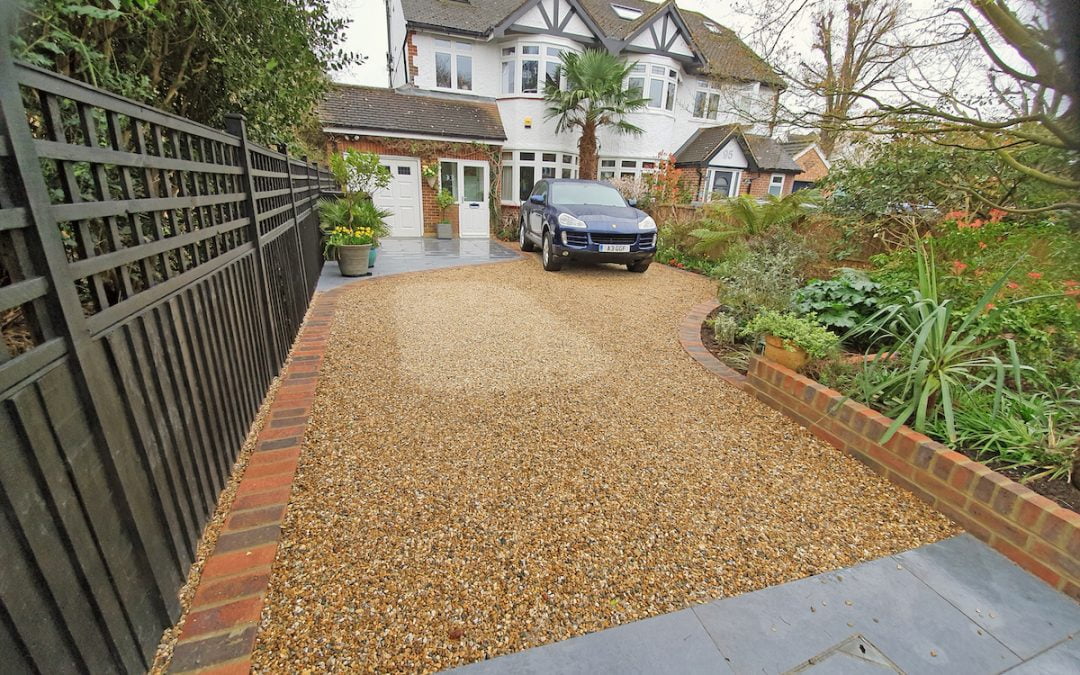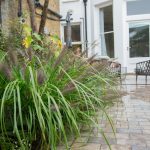The sound of the crunch of gravel as your car arrives in a beautiful driveway, conjures up images of hot summers and beautiful people in fancy sports cars.
Gravel driveways have for many years been a popular choice for the hard landscaping leading to the front of a home. Gravel is relatively cheap, easy to lay, and low maintenance. What’s more it looks good both in country homes and in urban areas where it can match the local brick or stone colour.
It also helps that there’s an immense choice of size, colour and texture to achieve this. Plus local availability with stone traditionally used from beaches in coastal areas and quarried gravel inland.
Another bonus of a gravel driveway is that the crunch of gravel under a car’s wheels, or even someone on foot, can warn you that someone may be about to visit you, welcome or not.
But a newly laid gravel driveway can quickly become scruffy if it’s not laid correctly. In the short term spreading stones and the spinning of a car tyre will cause ruts in the driveway. Over time weeds can emerge through and the gravel become compressed, necessitating a top up with fresh stones.
Choice of Gravels for Landscaping
There is a huge choice of gravel available to choose from at a range of prices to suit your pocket or the design of your home and landscaping. Pea shingle or pea gravel is probably the most economical choice and is readily available from most builder’s merchants.
More expensive gravel will usually be more rounded, less sharp and have a more uniform size, colour and texture. At the top end the gravel will be of a single type of stone, smoother and more regular in size.
Laying a Gravel Driveway
As mentioned earlier, one of the problems with installing gravel driveways is the potential for the gravel to compress and for weeds to appear through it.
Keeping it in place is an important part of installing a driveway and making it easy to maintain in the years ahead. Gravel driveway grids with a honeycomb structure will stabilise the gravel, prevent movement and damage and provide a uniform driveway which will retain its shape and appearance for many years.
It is also important to put down a quality under surface permeable membrane to impede weed growth and allow for adequate drainage so that you avoid puddles after rain.
For further advice on designing a gravel driveway for your home as part of a landscaping project, please contact us.
BACK TO BLOG






